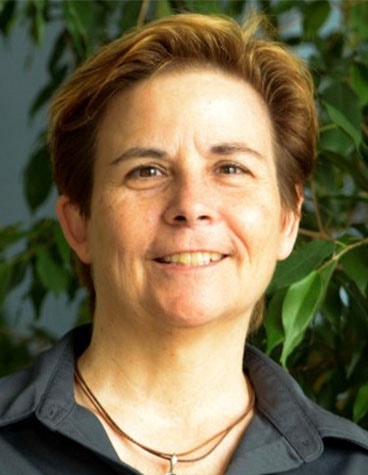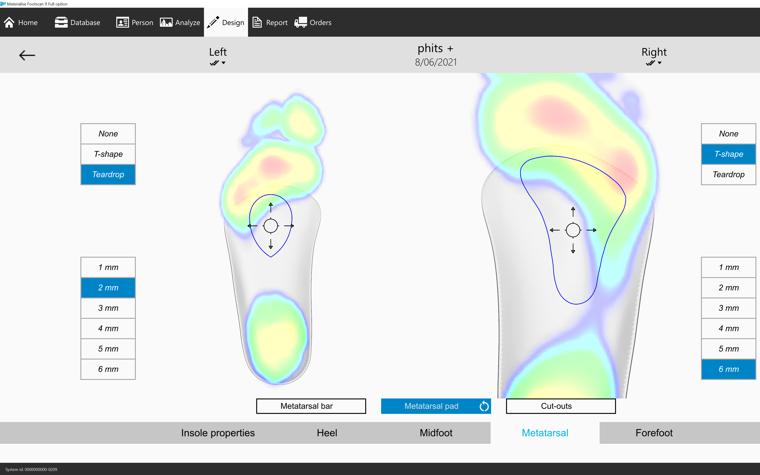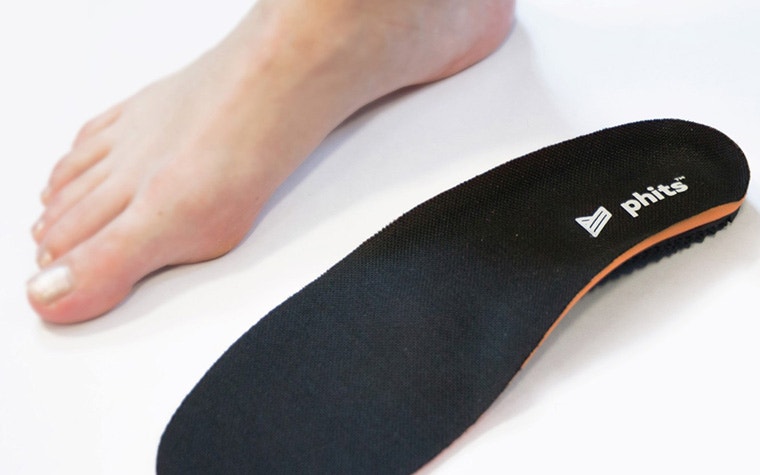EXPERT INSIGHT
Improving Podiatric Treatment with Materialise Phits Suite

Does Materialise Phits Suite really make a difference? For US-based podiatrist Dr. Victoria Melhuish and her patients, the answer is a resounding yes. Discover how the system helped transform her practice and improve results for various challenging diagnoses.


Dr. Victoria Melhuish has long used Materialise Phits Suite to help her patients.
As a board-certified podiatrist with over 35 years of professional experience, it’s reasonable to say that Dr. Melhuish knows more than her fair share about the world of custom orthotics. Thanks to a hands-on approach to producing those she designs, she has helped thousands of patients walk and live more comfortably since first beginning her practice.
When Dr. Jenny Sanders introduced her to Materialise Phits Suite and Materialise channel partner Go 4-D, she didn’t hesitate to integrate it into her own workflow. After using the complete system (footscan pressure plates, footscan software, and 3D-printed phits orthotics) for more than three years, it’s safe to say she’s fully converted to a digital way of working.
“I went completely digital. I just jumped in with two feet,” she tells us. “I just really liked the idea. It kind of fit with my practice, which is always looking for more science-based technology. Not just the next shiny thing for the sake of shiny things, but quality that will really make a difference.”
“What really stuck in my mind is that for three particularly difficult problems, it worked better than anything else I’d ever seen: hallux rigidus, neuromas, and metatarsophalangeal joint (MTPJ) pain.”
— Dr. Victoria Melhuish
When Dr. Melhuish says she jumped in with two feet, she means it quite literally; having worn orthotics for years, she was quick to try her own custom pair of phits™ orthotics.
“So, I’ve worn orthotics for a long time,” she explains. “I remember when I first got my phits, I thought, ‘Oh, what did I just do?,’ because I could feel the bump of the transverse arch support and thought it was an issue with my 3rd interspace neuroma. But I quickly realized that it was really helping my foot in a different and much better way than my previous orthotics.”
Trusting the system
Having experienced firsthand the difference phits orthotics could make, Dr. Melhuish was quick to offer the same to her patients. While the Phits Suite was easy to get to grips with, learning to let go and trust the design generated by the software took some time at first — breaking a 17-year habit of manually adjusting the orthotics she made was difficult, she explains.
“I had been using the system a little bit and was still finding my way. Many times, I would throw a heel varus in for control, and even the fifth metatarsal wedge, because that was something I had been using for a long time.
“But for one patient, it just didn’t work. I changed the orthotic, and it still fit comfortably on his foot, but it threw his back off. So, I changed it again, and it was better, but still not right. That was when I decided that maybe I just needed the computer — I rescanned it completely, said I’m not going to override anything, and I just listened to the software. And it worked."


Dr. Melhuish’s trust in footscan’s design automation was well-placed. Based on dynamic data gathered through the footscan pressure plates while her patients are in motion, each design is accurate and unique, making the orthotics more personal than ever. It enabled her to provide an orthotic that fit right out of the box without causing pain elsewhere. But that example was merely the beginning — over the years, Materialise Phits Suite has provided solutions for more challenging cases, too.
“What really stuck in my mind is that for three particularly difficult problems, it worked better than anything else I’d ever seen: hallux rigidus, neuromas, and metatarsophalangeal joint (MTPJ) pain. I had made orthotics for all these patients before — but never with the success that I had with the Phits Suite and phits orthotics.”
Improving quality of life
While foot-related issues such as these are the main reason her patients come calling, Dr. Melhuish makes sure to ask about potential symptoms elsewhere in the body, such as the knee, back, and sciatica. She has learned that by balancing the gait through well-made orthotics, these problems tend to improve as well — small changes that can have a big impact on their quality of life.
“I do still run up against that — ‘Oh yeah, I’ve had orthotics before’ — and I just say, not like these. Never like these.”
— Dr. Victoria Melhuish
It’s this ability to offer her patients the freedom to live and move more comfortably that drove Dr. Melhuish to podiatry in the first place. “I didn’t want to push pills. I wanted to be able to fix problems,” she adds. For many of her patients, that process begins with understanding.
“I think many people are surprised that pain in these areas comes from their feet. I use models in the office to show how a small change in one area can lead to a bigger change elsewhere, and most people resonate with that.
“Most people are in the middle of a bell-shaped curve,” she explains. “It’s rare to ever make someone with back problems feel 100%, but you’ll see at least a 50% improvement in the symptoms most of the time. That’s pretty good when someone is dealing with chronic back issues, and it comes from greatly improving their alignment.”
Naturally, some patients show greater progress than others. Dr. Melhuish thinks back on one patient particularly fondly — a young woman suffering from regular migraines caused by a foot-related issue.
“She was here for an ingrown toenail, but I noticed that she had a functional hallux limitus because she had bone spurring at the tip of her toes from the flare-up,” Dr. Melhuish recalls. “I was a little hesitant to approach it, but I told her, ‘There’s a biomechanical issue in your foot that I can see here — it’s possible that we might be able to improve your migraines because it may be related to alignment and tension.’
“And she was all for it — we made her a pair of phits, and she ended up coming back to say that her migraine pain was significantly improved.”
The importance of orthotics for all ages
While home run cases such as this are rare, the learnings that come from them greatly benefit other patients, particularly in older demographics. A balanced gait and correct alignment often help Dr. Melhuish’s senior patients retain their independence for longer.
“I placed a lot of seniors in orthotics. They might have foot pain or balance issues — it helps their balance so much, so orthotics are used for safety, too. Sometimes patients aren’t ready for huge AFO braces; they want to stay in their own footwear. I find these senior patients are very open to orthotics to help balance and are very happy with the results.”


However, Dr. Melhuish also believes in raising awareness of the importance orthotics can have for younger patients. Understandably, adding another item to the list of clothes and shoes that rapidly growing children need replacing regularly can lead to some hesitation, but the benefits cannot be understated.
“I tell parents when they come in that we want to help their child’s foot mature,” she explains. “The joints are soft at this point, they’ll get a lot of pressure on them, and then they will harden in maturity to a bad position. But we have a window of opportunity to improve the foot by holding it now before they develop that bone structure as an adult.”
Importantly, getting her patients to agree to her recommended treatment plan is easier now than ever. Just like her own introduction to Materialise Phits Suite, the system makes sense: each step is easy to understand and has a clear role in the entire process.
“I explain what the software is doing and how they will walk over this pressure plate to gather lots of steps and data. Then we’re going to get the 3D scan of the shape and volume of the foot, which is going to do a much better job than casting. When I do that, they say, ‘Yeah, that makes sense to me.’ Before, you’d show them a little piece of plastic and say how it would affect their gait, and of course, you’d run into skepticism, especially if they’d had orthotics before.
“I do still run up against that — ‘Oh yeah, I’ve had orthotics before’ — and I just say, not like these. Never like these.”
Share on:
You might also like
Never miss a story like this. Get curated content delivered straight to your inbox.
